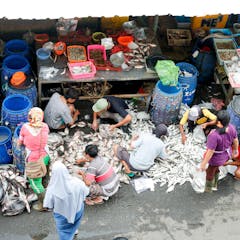
Articles on Gender inequality
Displaying 1 - 20 of 186 articles

Some countries closer to achieving gender equality still have high rates of domestic violence, but look a bit closer and you’ll see the full story.

Backed by an overwhelming majority, Claudia Sheinbaum has a unique opportunity to advance gender equality in Mexico.

Women and gender-diverse people bear the brunt of climate change’s negative affects. If Australia wants to be taken seriously on climate action, this needs addressing.

With women still underrepresented in leadership globally, why aren’t organizations and investors doing more to realize the benefits that diversity brings? Perhaps it’s the C-suite that needs changing.

Gender violence has captured the attention of policy makers and the public. There’s many things that can be done, both in the short and long term.

The Fair Work Commission has been given new tools. Among them is the power to eliminate gender-based undervaluation of work in entire awards and groups of awards.

Data show young Australian women are less politically engaged than men. Given the negative experiences of female politicians, that’s hardly surprising. But there’s a glimmer of hope.

For Canada’s new Women Entrepreneurship Strategy to be effective, we must gain a deeper understanding of sexism in startup spaces.

Women in Makoko, a floating slum in Nigeria, face challenges funding their fish trade. Literacy and financial inclusion programmes can make a difference.

The most recent data from Statistics Canada shows that, while gender inequalities in the workplace remain fairly large between women and men, there are some notable exceptions.

Sea-level rises and storm surges don’t discriminate, but societal structures do.

Not only is the health sector feminized, but women — particularly racialized women — are more likely to be in jobs at the low end of the pay scale, but that require prolonged contact with patients.

Many young women feel trapped and indebted to their families.

The emotional realities experienced by women coaches are adversely impacting their ability to thrive in a culture that doesn’t recognize or support key parts of their work.

By examining the FIFA Women’s World Cup performances, we can gain insights into the efforts countries are making to address gender inequality beyond sports.

The IOC needs to look beyond gender parity and work with international federations to address athletes’ conditions of participation in sports to achieve true gender equality.

In the Japanese workplace, women face discrimination, restrictive behaviour and appearance codes and a lower glass ceiling than elsewhere. Only a profound cultural shift will change that.

Our new research has tracked the gender of artists working at Australian opera companies and found evidence of pervasive gender inequality.

Sexism and misogyny still rears its head in everyday interactions in the financial services industry, not just in the scandals that hit the headlines.

Women’s Day is used to draw attention to the issues women still face in South Africa.
